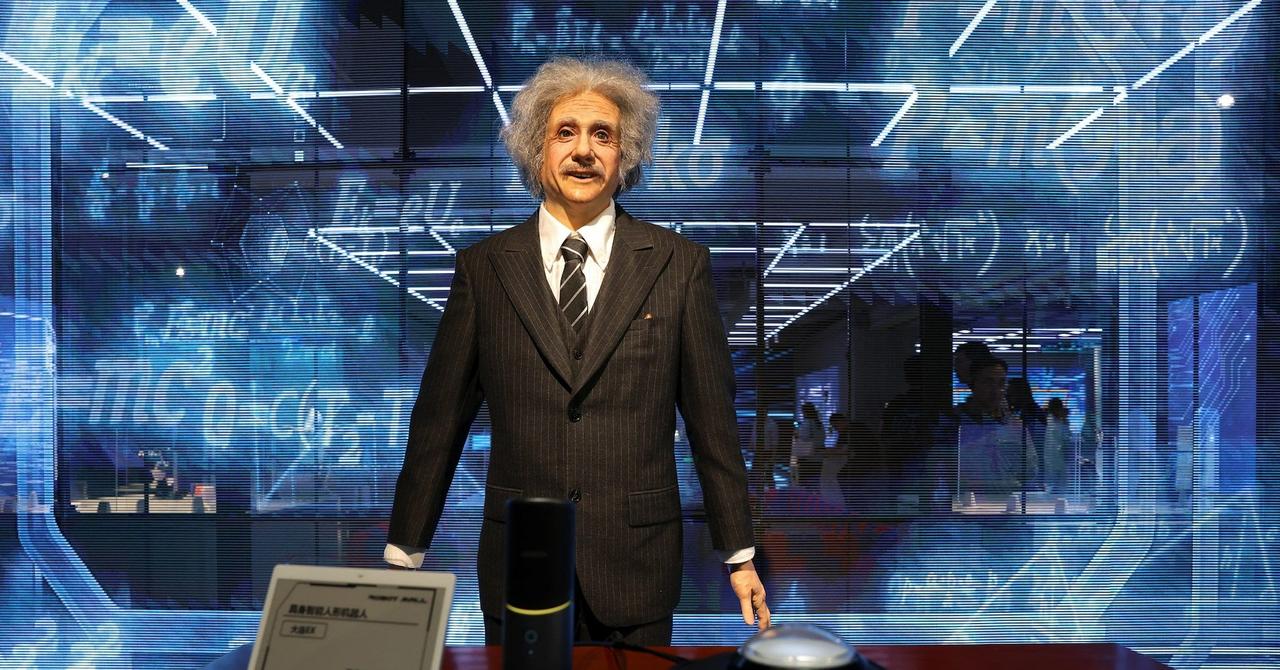China Pioneers Subway-Riding Robots for 7-Eleven Deliveries in Shenzhen
2 Sources
2 Sources
[1]
Robots in China are riding the subway to make 7-Eleven deliveries
Subway commuters in Shenzhen, China, may soon need to make room for a fleet of chunky, snack-carrying delivery robots. Earlier this week, more than three dozen autonomous, four-wheeled delivery robots boarded and exited active subway trains, and eventually delivered packages to several 7-Eleven convenience stores. Although this demonstration was only a preliminary test and took place during off-peak hours, the company behind the subway-riding robots believes they could soon help stock shelves at around 100 7-Eleven locations. The initiative is part of a broader effort in China and other countries to normalize the presence of delivery robots operating in public spaces. The test run, first reported by the South China Morning Post, featured 41 robots developed by a subsidiary of Vanke, a large Chinese firm partly owned by the Shenzhen Metro. A video demonstration shared by the company shows the roughly three-foot-tall, stocky bots lining up at a subway stop. They wait for human passengers to exit the subway car before rolling onboard. Once they reach their stop, the robots exit the car and drive themselves to an elevator, which is remotely activated. After exiting, each robot rolls up to a storefront, where a human worker unlocks its boxy body and retrieves the goods stored inside. In this case, the video shows a worker unloading what appears to be a carton of tea. Each robot also features an LED screen "face" that lights up with cartoonish eyes and smiles. Vanke claims its robots do all this by using a combination of robotics and AI planning. The machines are equipped with panoramic lidar -- similar to the technology used in driverless cars -- to "see" the world around them. A specially designed chassis system, which Vanke likens to a "skeleton and motor nerves," enables the robots to make minor autonomous adjustments when boarding subway cars or elevators. The entire delivery process is managed by an AI-based dispatching system that handles scheduling and determines optimal delivery routes. This planning system accounts for multiple variables like delivery requirements, cargo type, and subway capacity to develop the most efficient routes. All of this, Vanke claims, is in service of simplifying and speeding up logistics for shops in metro systems, which ordinarily rely on human drivers above ground that can face delays due to limited parking and congestion. Shenzhen's subway system is massive. It has more than 300 stations spread out across the megacity, many featuring their own shops and convenience stores. "In the past, store goods could only be delivered to subway stations via ground transportation," a convenience store manager participating in the trial reportedly said in a translated statement. "Not only was it difficult to park on the ground, but the process of transporting goods from the ground to the store often encountered the subway's morning rush hour, resulting in high delivery time and labor costs. 7-Eleven did not immediately respond to Popular Science's request for comment. The subway-riding robots are part of a citywide initiative in Shenzhen called the Embodied Intelligent Robot Action Plan, which aims to accelerate the adoption of robotics across multiple industries by 2027. More broadly, the Chinese government has been pushing in recent years to normalize the presence of robots in public spaces. In April, about 20 bipedal robots raced alongside humans in what was dubbed the world's first "humanoid robot half marathon." (Only four of the machines completed the race -- most tripped, veered off course, or broke down in clouds of smoke.) More recently, Chinese robotics company Unitree livestreamed what it claimed was the world's first boxing match between humanoid robots. Similar efforts to introduce robots into public areas in the US have often been met with less-than-stellar reception. Last year, the New York Police Department officially retired a roaming egg-shaped security bot that patrolled subway stations following backlash from commuters and privacy advocates. Smaller-sized food delivery robots from companies like Starship are already bringing take-out to hungry students at around 39 universities, though their rollout has been marred by some robots getting lost, falling in ditches, and struggling to cross streets. Amazon is even reportedly developing AI-trained robots to one day jump out of vans and deliver packages. But if the untimely demise of hitchBOT -- a hitchhiking robot that was beheaded by vandals in Philadelphia -- is any indication, people may still need a bit more time to learn how to coexist with humanoid machines in public spaces.
[2]
China's fleet of penguin-like robots delivers 7-Eleven goods via subway - VnExpress International
China's property giant Vanke has launched a world-first fleet of autonomous robots that deliver goods for 7-Eleven stores in Shenzhen by commuting on subway trains. The initiative, which debuted on Monday, features 41 robots that board trains during off-peak hours. At each station where a 7-Eleven is located, the robots exit the train and deliver goods directly into the stores. The project, reported by the South China Morning Post citing local news outlet SZNews, is the first of its kind globally. Operated by VX Logistics, a subsidiary of property giant Vanke, part-owned by Shenzhen Metro, the robots have already caught the attention of curious passengers on their first day, with many stopping to film as they smoothly navigated the train carriages. Each robot stands about a meter tall and is designed to address a longstanding challenge for shop managers, who have traditionally relied on human workers to transport goods on trolleys to platforms. With a four-wheel chassis and a sleek, penguin-like appearance, the robots feature glossy dome heads with LED faces that flash friendly eyes and smiles. They are capable of navigating obstacles such as lifts, platform gaps, and train doors with precision, according to Interesting Engineering. "These robots are specially designed with unique chassis systems that allow them to cross gaps to enter lifts and carriages," Hou Shangjie, head of automation at VX Logistics, said, as cited by SCMP. "They will continue to iterate based on real-world performance" The project is part of Shenzhen's "Embodied Intelligent Robot Action Plan," launched in March, which aims to expand the use of service and industrial robots by 2027. The city, already home to over 1,600 robotics companies, is positioning itself as a global leader in robotics and artificial intelligence.
Share
Share
Copy Link
Vanke, a Chinese property giant, has launched a fleet of autonomous robots that deliver goods to 7-Eleven stores by commuting on Shenzhen's subway system, marking a significant step in integrating AI and robotics into urban logistics.
Innovative Robotic Delivery System Debuts in Shenzhen
In a groundbreaking development for urban logistics and artificial intelligence, China's property giant Vanke has launched a fleet of autonomous robots that deliver goods to 7-Eleven stores by commuting on Shenzhen's subway system. The initiative, which began on Monday, features 41 robots designed to navigate the complexities of public transportation and last-mile delivery
1
.Robot Design and Capabilities

Source: Popular Science
Standing approximately one meter tall, these four-wheeled robots boast a sleek, penguin-like appearance with glossy dome heads featuring LED faces that display friendly eyes and smiles. Equipped with panoramic lidar technology similar to that used in driverless cars, the robots can "see" and navigate their surroundings with precision
2
.The robots' specially designed chassis system, described by Vanke as a "skeleton and motor nerves," allows them to make autonomous adjustments when boarding subway cars or entering elevators. This unique design enables them to overcome challenges such as platform gaps and train doors
1
.AI-Powered Logistics Management
The entire delivery process is managed by an AI-based dispatching system that handles scheduling and determines optimal delivery routes. This sophisticated planning system takes into account multiple variables, including delivery requirements, cargo type, and subway capacity, to develop the most efficient routes
1
.Addressing Urban Delivery Challenges
The introduction of these subway-riding robots aims to simplify and speed up logistics for shops in metro systems. Traditionally, stores relied on human drivers above ground, facing delays due to limited parking and congestion. A convenience store manager participating in the trial highlighted the difficulties of ground transportation, noting the high delivery time and labor costs associated with navigating morning rush hour traffic
1
.Related Stories
Part of Shenzhen's Robotics Initiative
This innovative project is part of Shenzhen's "Embodied Intelligent Robot Action Plan," launched in March, which aims to accelerate the adoption of robotics across multiple industries by 2027. Shenzhen, already home to over 1,600 robotics companies, is positioning itself as a global leader in robotics and artificial intelligence
2
.Global Context and Challenges
While China pushes forward with integrating robots into public spaces, similar efforts in other countries have met with mixed reception. In the United States, for example, food delivery robots have faced challenges such as getting lost, falling into ditches, and struggling to cross streets. The New York Police Department recently retired a roaming egg-shaped security bot following backlash from commuters and privacy advocates
1
.As the world grapples with the integration of autonomous robots in public spaces, Shenzhen's subway-riding delivery robots represent a significant step forward in urban logistics and AI application. The success of this initiative could pave the way for similar systems in other cities, potentially transforming the landscape of urban delivery services worldwide.
References
Summarized by
Navi
[1]
Related Stories
Recent Highlights
1
Google launches Gemini 3 Flash as default AI model, delivering speed with Pro-grade reasoning
Technology

2
OpenAI launches GPT Image 1.5 as AI image generator war with Google intensifies
Technology

3
OpenAI launches ChatGPT app store, opening doors for third-party developers to build AI-powered apps
Technology








